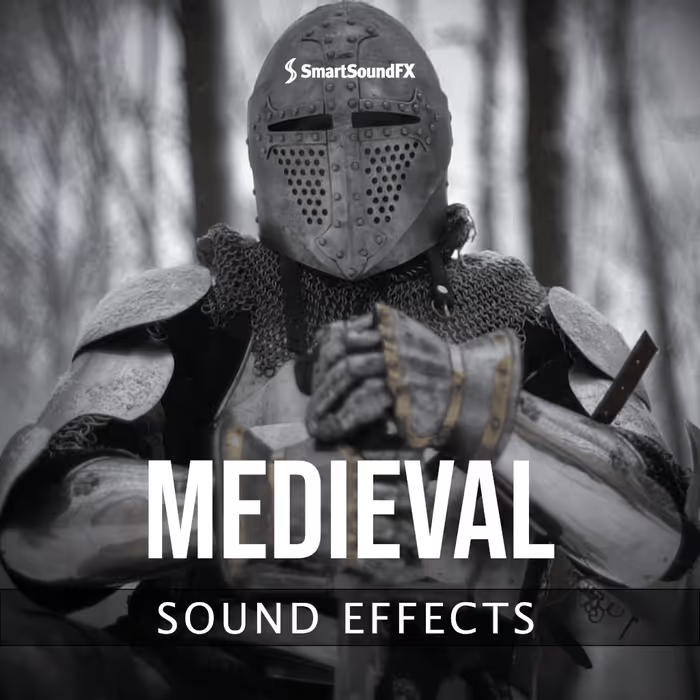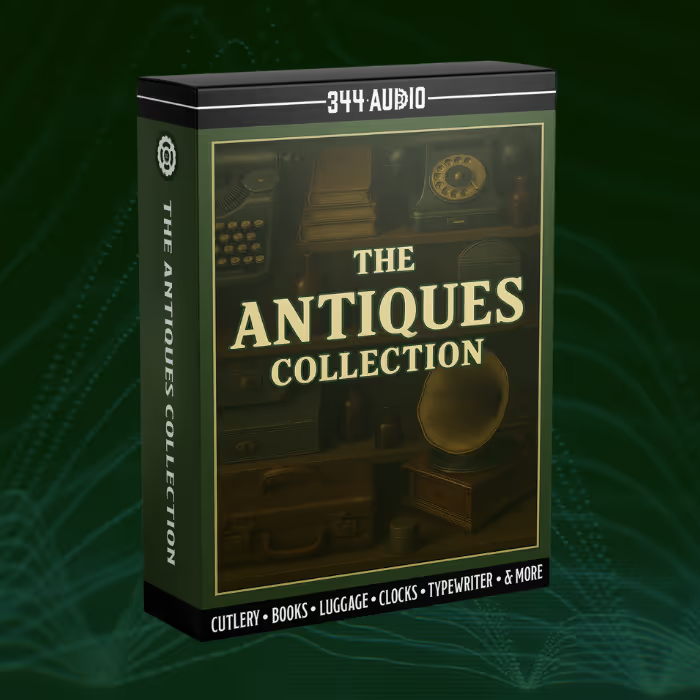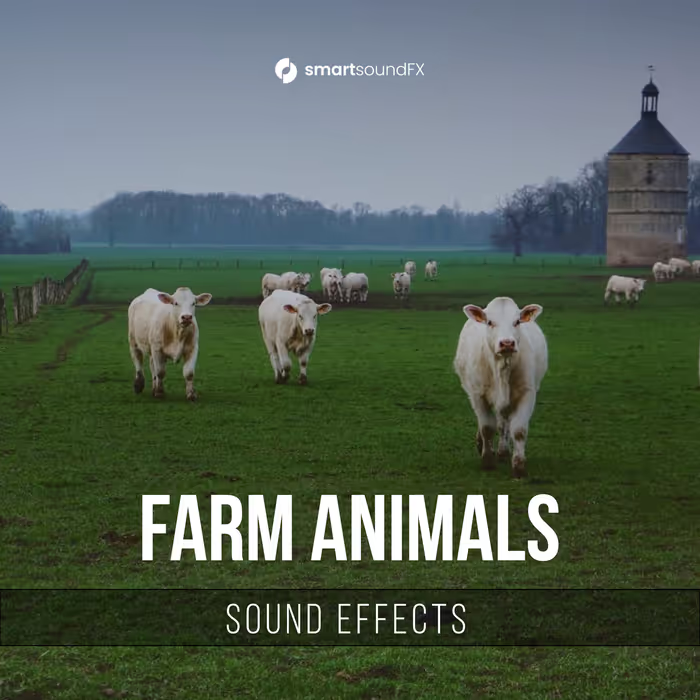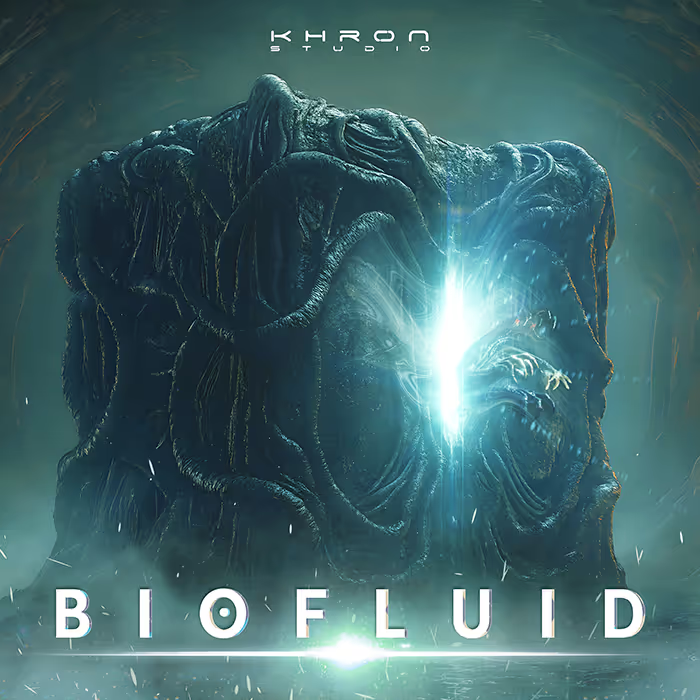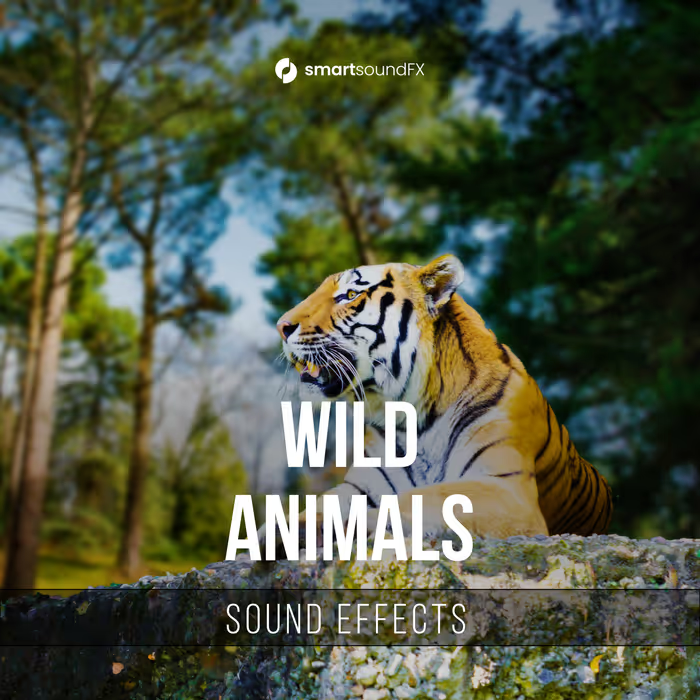
The sound team on Mafia: The Old Country sought to transport players back to 1900s Sicily, to put them in the shoes of Enzo Favara — a sulfur mine worker who rises through the ranks of a prominent crime family. The game features car races, knife fights, shootouts, and, most of all, a compelling narrative that drives the story through seamless cinematics.
Here, Studio Audio Director Matt Bauer (2K Shared Development Services, who handled sound on Mafia III), Audio Lead Andrej Smoljan (2K Shared Development Services), Principal Sound Designer Petr Klimunda (Hangar 13), Senior Sound Designer Pavel Smely (Hangar 13), Senior Sound Designer Bryan Ploof (2K Shared Development Services), Senior Dialogue Designer Erik Schmall (2K Shared Development Services), and Senior Sound Designer Josh Holloway (2K Shared Development Services) talk about how they brought the game to life through sound, by recording antique cars, designing appropriate crowd walla for the races, creating seamless transitions between cinematics and gameplay, building a complex ambient system for environmental soundscapes, performing custom foley sounds via MIDI, working with composer BT, designing a robust music management system that covered every situation in-game, and much more!
Mafia: The Old Country – Official Accolades Trailer
What did you want to do differently – creatively and/or technically – in your approach to creating the sound for Mafia: The Old Country? How were you able to build on what you learned from the previous games when creating the sound for this game?
Bryan Ploof (BP): When setting out on this next entry of the Mafia series, we wanted to tie into the rest of the team’s efforts in creating a seamless cinematic experience. This meant we would be taking our prior experience of standalone cinematics and creating new systems and philosophies to embed their audio content into the game world’s flow, while maintaining high-quality standards.
Pavel Smely (PS): A major step forward was also the complex ambient system programmed by our excellent audio programmers, Viktor Černý and Matej Oravec. Thanks to this, we did not have to manually populate the large, vast map of Sicily with many sound emitters. Instead, by combining biome type detection and custom override volumes, we were able to manage two main parts of the system. Based on the given biome type (of which we have 6 in the game) and many other parameters, these systems placed sounds around the player in 3D — either with a randomly defined position, such as cicadas and distant sounds, or directly on specific object types, such as trees, bushes, etc.
Based on the given biome type […] and many other parameters, these systems placed sounds around the player in 3D
By deciding to have all ambient sounds in 3D — placed directly within the game world— we could, in combination with spatial volumes, achieve a more realistic sound effect with natural and smooth attenuation when entering and moving through interiors. It sounds great, especially when driving vehicles, where all the ambience sounds truly pass by the player.
Thanks to the excellent optimization of this system, we could afford a truly large number of individual emitters, which were able to create the immersion of a living and dynamic world around the player.
A big part of this sound work was excellently handled by our talented colleague, Sound Designer Paul Coret, who was responsible not only for the ambience audio for our game world but also for its dynamic changes as it adapted to in-game moments in the chapters, a task with which Josh Holloway also helped out.
Petr Klimunda (PK): Honestly, the biggest change was leaving our proprietary engine and switching to Unreal Engine. We had to build all the systems from scratch. On the other side, it gave us a chance to see things from a different perspective and build more robust systems like an emitter spawner, which Pavel describes above, or seamless cinematics transitions, which Bryan mentioned.
Andrej Smoljan (AS): As Bryan already mentioned, one of the pillars of sound design on Mafia: The Old Country was persistent audio throughout the game across cinematics, gameplay, and other game states. One of the biggest changes on Mafia: The Old Country is the way we implemented and designed music for the seamless soundscape.
Pavel had the key role in bringing this system to life by designing technical solutions to creative problems
It was equally a creative and a technical challenge as it required us to build a robust music management system that covered all the different situations, from stealth and combat intensities tied to enemy AI, to bespoke cues for unique plot points, and everything in between. Pavel had the key role in bringing this system to life by designing technical solutions to creative problems, resulting in a musical experience that hits all the emotional points while seamlessly moving through the narrative.
Of course, none of this would be possible without the amazing music composed by Brian Transeau (“BT”) and an incredible effort by Thomas Hansen, who built and populated the interactive music switch and crafted each unique moment in the game.

The game is set in 1900s Sicily. What went into creating the rich tapestry of environmental sounds? (It’s so dusty, rocky, and arid!) And later, in Chapter XII: La Forza Del Destino, there’s a nice contrast when it rains and the player explores underground catacombs.) Did you capture any ambiences from Italy? Any helpful indie sound libraries of this region?
PS: At the beginning of the project, I conducted very detailed research on what species of animals and birds can (and at that time) be seen and heard in Sicily — how frequently they appear and in which areas they occur. The goal was to capture the beauty of the Sicilian landscape as authentically as possible, with respect for the local nature. It was important to determine and define the kind of sound atmosphere and composition we would give to each region, and how their character changes with the weather and the seasons.
Recording the wildlife directly in Sicily would have been extremely time-consuming, so we made use of as much available information and as many existing recordings as possible. We searched for sounds of individual species across various sound libraries. We have recordings of more than thirty bird species alone in the game.
The ‘Small Conversations’ system […] brought a lot of life into the game through countless snippets of street dialogues between local people
Another key contribution to the authentic Sicilian sound came from Sound Designer Paul Coret, who designed and oversaw the “Small Conversations” system. It brought a lot of life into the game through countless snippets of street dialogues between local people. The system could dynamically control ambient crowds, adjust their mood and density depending on the situation and location within the game world. All of these conversations were recorded in Sicilian dialect, directly in Sicily, which greatly enhanced the authenticity of the overall soundscape.
AS: In addition to the extensive research Pavel has conducted, one of the references for the design of our environments came from Game Director Alex Cox’s documented trips to Sicily, which included videos and his valuable personal impressions. Throughout development, we also collaborated with our Sicilian development partners, Stormind Games, to guarantee the authenticity of each area.
I found the quiet, seemingly empty soundscape of 1900s Sicily familiar, as I spent a portion of my life living on a small, car-free island in the Adriatic Sea. There, the sound of someone chopping wood could be heard clearly from a mile away, almost making it possible to guess from which house the sound was coming. In such a quiet environment, speech becomes a prominent element. Whether people are discussing the weather, arguing, or commenting on current events, human presence can be felt even from a distance. To illustrate that, Paul Coret developed a system of small conversations that tracks groups of people on the map, playing appropriate and precise “walla” recorded in Sicilian by Stormind Games.
Ambiences were an important device in supporting the narrative. Initially, the safety and beauty of the vineyard was illustrated by lively “walla” and cheerful birds. Towards the end of the game, the same space feels empty, with bleak “walla” cutting through the hollow wind and foliage. While the insects are most prominent in combat areas, their disappearance as the catastrophe looms signifies the ‘calm before the storm.’
The calmness and emptiness of rural areas were emphasized by using the general hustle and bustle of human activity in Palermo and other smaller towns
Contrast was an important tool in creating ambiences for Mafia: The Old Country. The calmness and emptiness of rural areas were emphasized by using the general hustle and bustle of human activity in Palermo and other smaller towns across the map. For that, we sourced individual sounds from many different libraries, but the most important ones in portraying Sicilian life were ‘Sounds & Ambiences Of Sicily’ by WW Audio, ‘Italy – Sicilian Ambients’ by Soundholder, and ‘Sound of Italy: Complete’ by Roberto Serra.
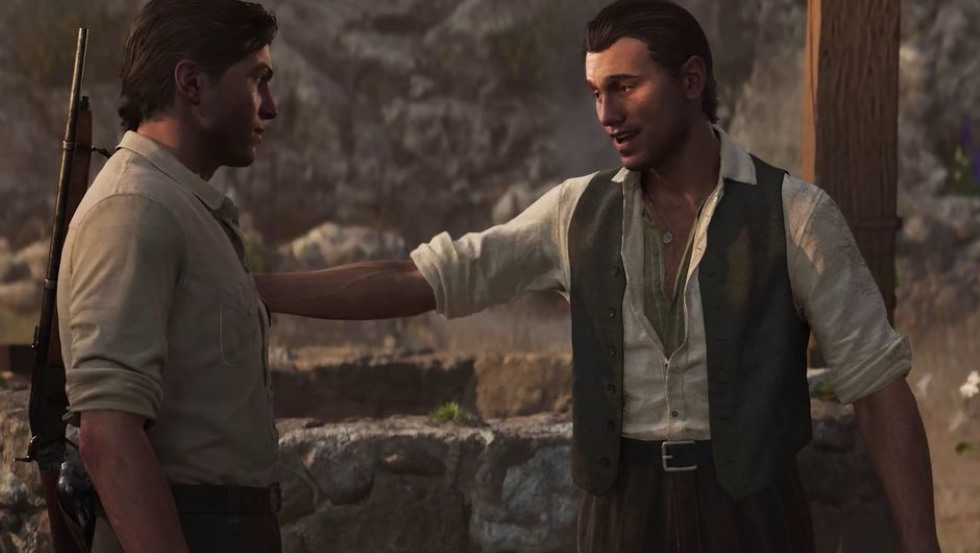
The game follows a linear narrative-driven storyline told through cinematics and character interactions, featuring full voice acting for English, French, German, Spanish, Czech, and Russian. Can you talk about the dialogue recording/editing? What about implementation, and putting the voices into the spaces in-game?
Erik Schmall (ES): A lot of inspiration for the sound of the dialogue came from classic mafia films, so I wanted to keep the dialogue as natural-sounding as possible while also having an overall darker tone. This meant preserving dynamics as much as possible without relying on compression or trebly EQ boosts. Like those films, I wanted the whispered lines to make you lean in a little, while the shouted lines should feel jarring, even violent. Situations in the game can erupt at any moment, and the yelling should unnerve you.
Helped by our amazing cast who made the performances feel effortless, the editing and mastering of the lines was truly handcrafted. In the age of AI, I feel that’s significant to say. For the process, we had three extremely proficient dialogue editors in Sergio Grandolfo, Marisa Ewing, and Levon Schwartz, who provided me with the edited gameplay assets from the raw sessions. From there, every line went into their characters’ respective FX chain in Reaper where I did a master pass of each line. Implementing gameplay lines happened via Lexicon, a very cool narrative/dialogue tool developed internally at Hangar 13.
The editing and mastering of the lines was truly handcrafted. In the age of AI, I feel that’s significant to say
Since cinematics were seamless, it was important to match the tone from the booth to the mocap stage. Keeping the gameplay lines dynamic and with the same loudness specs was largely achieved nearly automatically with some slight EQ adjustments. Since The Don had a lot of whispered lines, Andrej and I felt it would be best to mix to The Don instead of matching him to everyone else. This created a not-so-subtle power dynamic shift and made The Don, quite frankly, terrifying.
Localization recording was provided by 2K, managed by Ruggero Varisco, and was mastered to the specs of the English .wav files. This would have been very challenging, but luckily Sergio Grandolfo, who was born in Italy, was able to stay on and tackle all of the loc cinematics in addition to implementing the loc gameplay lines.
AS: Erik’s exceptional dialogue work was central to our approach. We made an early decision to utilize a high dynamic range to highlight actor performances, grounding our overall mix in the dialogue. As Erik noted, Johnny Santiago’s portrayal of Don Torrisi provided significant opportunities for the mix. By maintaining the natural softness of Don’s quiet yet impactful lines, and subtly adjusting ambient sounds, music, and other elements around them, we wanted to highlight his commanding presence on screen.
Grounding the dialogue extends to the gameplay lines as well. Our goal was to allow gameplay dialogue to naturally move into the foreground to deliver key narrative points, while seamlessly blending into the background ‘walla’ layer when appropriate. This approach contributed to the authenticity of our background soundscape and the accuracy of our spaces, while ensuring a clear and intelligible dialogue delivery when necessary.

Can you talk about the sound work on the cinematics?
BP: For this entry of the Mafia series, we changed our approach to cinematics, and aimed for them to be seamless with the gameplay and runtime world. This meant a new structure was needed in order to design, track, and test each cinematic. Overall, we categorized cinematics into two tiers: Full Cinematics and Mini-Cines. Full Cinematics were fully captured on a mocap stage, with dialogue and movement performed by our wonderful cast. Mini-Cines were shorter, interstitial scenes, built from body-only motion capture performed by talented stunt actors.
Full Cinematics had multiple audio pipelines involved in producing the final sound output. On one layer, Ambience was being pulled from the runtime game, by zones placed by Paul Coret. These were then adjusted and controlled with mix states during the course of the cinematic and allowed us to keep a consistent sonic image between game and cinematic moments. Weapons were another layer, designed and implemented by Pavel Smely.
I used a custom Kontakt instrument I wrote, which used our custom foley library via MIDI. This allowed me to ‘play’ the footsteps for each character as I watched the cinematic
Footsteps had an interesting pipeline. After importing a cinematic’s video into Reaper, I used a custom Kontakt instrument I wrote, which used our custom foley library via MIDI. This allowed me to “play” the footsteps for each character as I watched the cinematic. I then adjusted volume, timing, speed type, surface material, and shoe type per footstep. We chose this process to better adapt to unexpected changes as cinematic development continued, as well as leveraging our foley library that was already functioning in-game as a whole surface, speed, and shoe-based system.
Non-footstep foley, such as hands, props, and cloth, as well as further sound effects, were designed to video by Jamey Scott.
Dialogue was edited and mastered by Erik Schmall.
Music was the last part of the puzzle, involving composition by BT, editing by Pavel Smely, and arranging by Thomas Hansen. All of these layers were then implemented to play at the same time, in sync with the cinematic. With the additional coverage of a mix state per cinematic, we were able to get seamless ambience, music, and sound effects for these scenes.
Mini-Cines were shorter scenes, sometimes without dialogue, that took their sound design approach more from animation tagging than a full cinematic design. I tagged footsteps, hand grabs, cloth, and dialogue all to play from the characters’ appropriate joints in-engine. Ambience and music were then adjusted by mix state and occasional custom triggers.
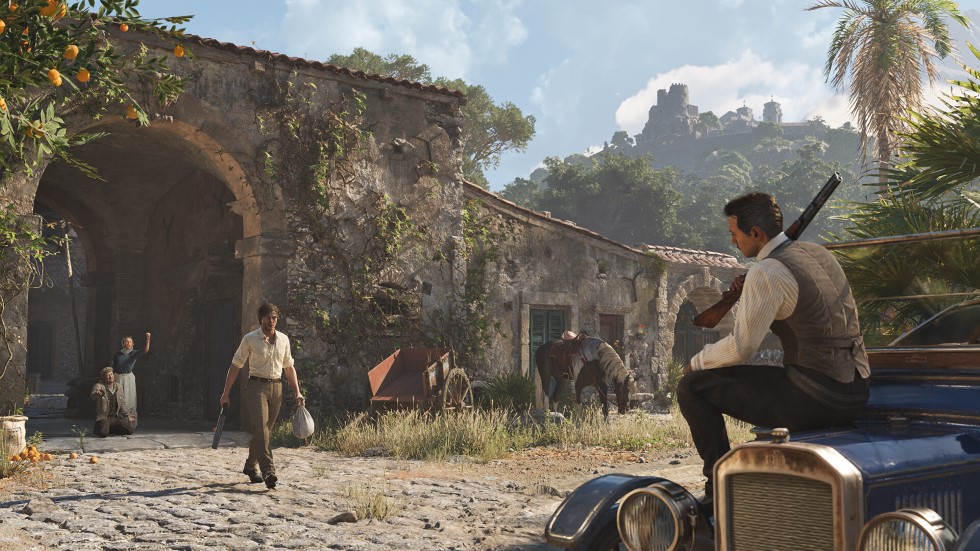
What was your approach to mixing the transitions in and out of cinematics so they blend smoothly with gameplay?
AS: The key aspect of mixing cinematic transitions was creating a bed of continuous sounds, which persists through both gameplay and cinematic. Ambience and systemic sound effects continue to play, maintaining their world position during the cinematic playback. At the same time, the music system transitions into a bespoke cue, crafted for that cinematic, preserving musical integrity.
On top of this foundation, specially designed layers were then added for each cinematic. All the diegetic elements, whether systemic or bespoke, have the same game-defined reverb send, which creates a cohesive and grounded soundscape.
We were able to modify all systemic sounds using a combination of states and RTPCs, which allowed for seamless transitions and a clear mix.
The key aspect of mixing cinematic transitions was creating a bed of continuous sounds, which persists through both gameplay and cinematic
BP: As mentioned above, a large portion of the approach involved separating layers to play simultaneously. Ambience, and even the game-defined reverb from in-world characters, was functioning via the authored world, so that no seam was heard on the transitions. Music was custom-fit to each cinematic so that tempo remained consistent. Foley was built from the same source material as the in-game assets. Dialogue was mixed with the awareness of in-game dialogue happening before and after the cinematic.
PS: For a smooth transition between gameplay and cinematic scenes, it was necessary to conceive the music and the implementation of individual cues in this way as well, so that everything ultimately reflected the plot and the artistic vision. This way, we were not technically limited by whether the game was currently in systemic combat, gameplay, or cinematic. Thus, we could control at any moment of the game whether to play a “systemic music loop” or precisely signed music for a given moment. This was very evident in the already mentioned duels, where gameplay and cinematic parts quickly alternate, while the music remains consistent but simultaneously, precisely reacts to the plot.

What went into the sounds for the cars? And can you talk about your sound work for the car race in Chapter 7: Spirito Sportivo?
Matt Bauer (MB): As with previous Mafia games, we put a lot of time and attention into the vehicles, and invest time towards extensive recording efforts to capture authentic sounds.
We started with a search for a wide variety of engine types with unique sounds. For Mafia: The Old Country, we worked with two collectors in the Czech Republic who owned over 400 cars combined. They were very generous with their knowledge and access to some very old, rare, and beautiful vehicles. Our oldest car was from 1902 — a 2-cylinder engine with only one running at the time. The highlight for me personally was a beautiful Bugatti from 1910. It was equally a work of art and craftsmanship as it was a drivable vehicle.
We place microphones at various positions around the engine bay, interior, and exhaust, looking for unique characteristics of each engine, and sometimes get a mic very close to the transmission, if possible. On any given vehicle, we’re using about nine mics. We’re typically using DPA 4062s as they are easy to position and can handle a higher SPL, as well as DPA 4099s and Sennheiser MKH8060s in most applications.
We place microphones at various positions around the engine bay, interior, and exhaust, looking for unique characteristics of each engine
Some of these cars had spoked spare tires mounted to the rear of the trunk, so it became very fortuitous for us to find easy mic mounting positions. For any vehicle we’ve been trusted to work with, we respect their age and fragility, so we come prepared with different mounting methods, as well as paint-protective vinyl film when needed to ensure no damage is caused to the cars.
In the past, we have used a Dynapak Dyno to record, but one limitation of a hub-style dyno is that the wheels and stud patterns usually need to be standardized. With vehicles of this age, there was nothing standard about them, which led us to record on the road. This meant extra time needed to find the right lengths and gradients of hills, balanced with the right weight (number of passengers) to create the various states of steady loops and variable engine loads we wanted.
Petr Klimunda (Principal Sound Designer) does an incredible job of processing these recordings, creating clean loops, and then blending and pitching them into great-sounding playable vehicles.
While we had access to each vehicle, we also recorded as much as possible with the engine off: doors, levers, switches, horns, gear shifts, crank starters, etc. We recorded everything we possibly could find within the time we had. We’ve always gone to great efforts with the vehicle audio for Mafia. It’s one of the most fun areas of work, and it’s a team effort we’re incredibly proud of.
PK: Cars have always been a big deal in our games, and Mafia: The Old Country is no different. The story takes place in the early 1900’s and what makes it really interesting is that it’s also the beginning of the automobile era. It’s a very exciting era; there were no standards and car manufacturers have often tried very different and unique approaches to make a car. Our goal was to make cars sound very different from each other and also express the huge difference between modern cars and these beautiful vintage cars.
One would think that it was challenging to find a working car of this age. Fortunately, there are still highly passionate people who care about these unique vehicles and keep them alive for future generations. We were lucky enough to work with two collectors here in the Czech Republic and with the great help of our Audio Producer, Tomáš Chlouba, we found all the cars we needed to record relatively fast.
The biggest advantage is the ability to record different driving states, such as acceleration and deceleration, with different engine load
Unlike Mafia 3 and Mafia: Definitive Edition, we decided to do the recording on the road. This technique gives you several advantages compared to the more traditional recording on a Dyno. The biggest advantage is the ability to record different driving states, such as acceleration and deceleration, with different engine load. Basically, this gives you the capability to record a truer sound of the car. There is a small disadvantage in the form of more difficult editing in Reaper, but it’s absolutely worth the effort. We used up to 12 mics on each car, mainly DPA 4062, DPA 4099, and Sennheiser MKH8060 for capturing the engine from different angles (engine, exhaust, transmission) and Sony PCM-D100 for interior. For foley and pass-bys, we used Sennheiser MKH416, MKH418-s and Sony PCM-D100.
Engine simulation itself is divided into four groups: full load, light load, deceleration, and idle. Each group has three layers: engine, gearbox, and exhaust, to switch between cameras/perspectives.
The whole car sound package is not just about the engine; many other sounds are equally important for the overall impression. Tire sounds and wheel bounces give you feedback about the surface you are driving on. Damage models for the engine, tires, and even the wheel axles give the player appropriate feedback about the car’s condition. And you can continue with all the mechanical parts like the crank start, gearshift, steering, bulb horn, and many others. All these sounds contribute to the realistic perception of the car’s sound.

How did you handle sound for the gun battles? And did you record weapon sounds? Any helpful indie libraries for weapons’ sounds?
PS: All weapons featured in the game are real-world models, which simplified the process of acquiring the necessary high-quality recordings — some of which were even captured here in the Czech Republic.
However, mere fidelity to reality was just the starting line. A truly realistic gunshot often lacks the ultimate impact and visceral character we aimed to instill. My goal was to make every shot resonate with a sense of power. In our game’s world, the gun serves as a manifestation of terrifying, untamed force.
I therefore dedicated significant effort to the unique sound design of each weapon. Every gun in the game has its own character, yet they should feel consistent together.
My inspiration was drawn from Hollywood cinema, particularly the best modern Westerns. We pursued stylized, designed gunshots emphasizing a powerful rhythm, wild punchiness in the sound, and distinctive mechanical details.

What went into the UI sounds, the character upgrade sounds, and the sounds for the garage/car upgrade environment?
Josh Holloway (JH): The UI sounds were a collaboration between me and Paul Coret. With our assets, we aimed to find a balance between fun and informative — standing out from the diegetic sounds but not so much as to feel separate from the cohesive sonic world. We bracketed the characterful elements with low and high sweeteners, along with some transient enhancement to give these sounds extra punch and shine. We used modular layers in Wwise to ensure variation, keeping consistency through processing and timing.
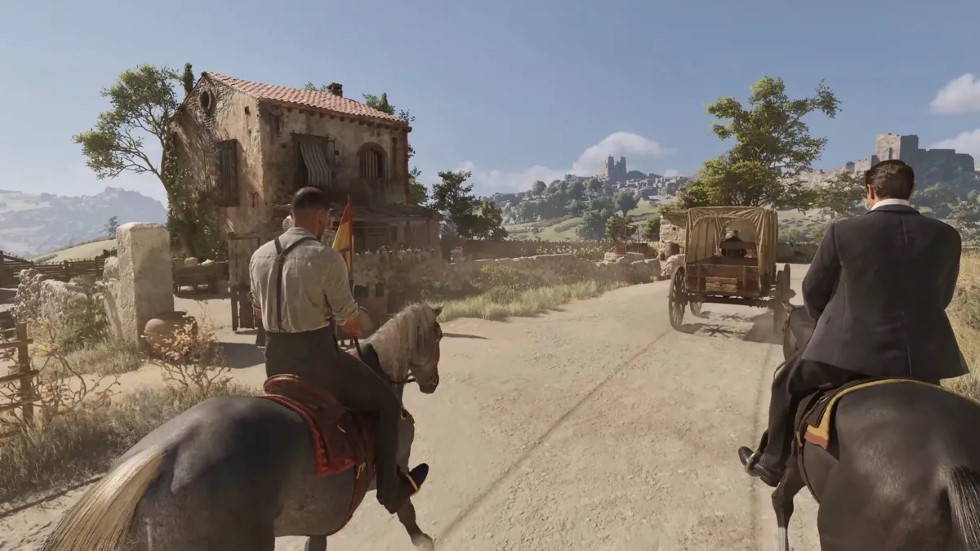
Can you talk about the foley work for the game?
MB: Cinematics were a team effort handled mostly by the in-house team, although foley was a combination of Bryan Ploof, our in-house Technical Audio Lead, and our very talented partner Jamey Scott of Dramatic Audio Post in Los Angeles.
BP: Foley was a team effort. Footsteps were a combination of myself and Petr Klimunda. Both the in-game system and cinematic stems were designed from our internal foley library as source. The in-game system consisted of various shoe types, speed types, surface materials, and cloth sweeteners. The cinematics were designed via a custom MIDI tool for authoring and rendering. The in-game cloth and hand sounds were tagged in animations, as well as the cloth that was paired along with the footstep system. Cinematic cloth and prop foley was performed by Jamey Scott. All other in-game foley, such as props, weapons, and physics, were designed in systems and implemented in animations by me, Josh Holloway, and Paul Coret. Vehicle foley was designed by Petr Klimunda. Weapon foley was designed by Pavel Smely.

What were your biggest creative challenges for sound on Mafia: The Old Country?
JH: Set pieces were a great creative challenge. Working with the mission design, VFX, and narrative departments yielded inspiring creative collaboration as we iterated on chapters of the game and illustrated the stunning scenes with sound. The parade and mine sequences, in particular, afforded us the chance to bring the world outside the player’s field of view to life, offering opportunities for ambiguous diegetic sound design.
Being a period piece, it was imperative that our source material didn’t contain evidence of the modern world. Where possible, we used clean, organic sounds, and where not possible, we leaned on iZotope RX to edit out hums, buzzes, and other unwanted elements. Shout out to the ‘Sound Of Italy’ libraries, which provided us with some eccellente, authentico source.
With different elements fighting for attention, each with a distinct role in the soundscape, it was essential to develop a comprehensive, dynamic mixing system
Putting together walla appropriate to the various crowds in the game was a fun challenge. For the Palio race, we edited many source recordings into usable assets and combined them into layers selected by a switch depending on the player’s latest position change — a nice way to drive dynamic race crowds.
AS: I believe one of our biggest creative challenges was achieving clarity in the mix, especially during intense action set pieces and combat sections. With different elements fighting for attention, each with a distinct role in the soundscape, it was essential to develop a comprehensive, dynamic mixing system. This system uses a series of RTPCs and meters to manage the interplay between the volume and frequency content of music, dialogue, cars, weapons, and various other sound effects, to provide a focused and dynamic mix.
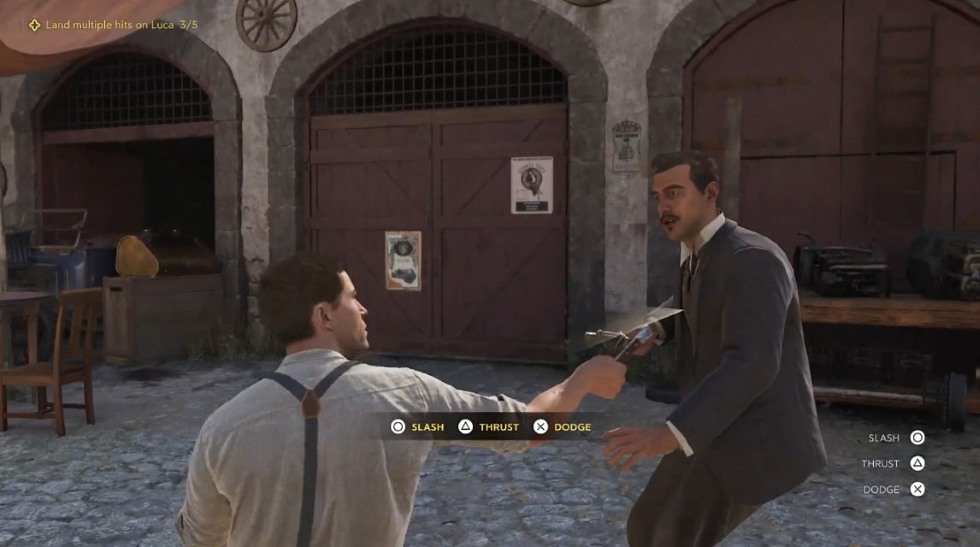
What were your biggest technical challenges for sound on Mafia: The Old Country?
BP: One of the biggest technical challenges I faced on the project was the new feature of Duels. These are one-on-one, realistic knife fights that also involve seamless cinematics in and out of them. It was a very multi-faceted effort from Design, Engineering, Art, Cinematics, Narrative, and Audio, spread across three countries. The best solution that overcame this task was a wonderful trip, where I got to work alongside my amazing coworkers in both the Brighton and Brno offices.
ES: Containing the noise floor of The Don’s quietly performed dialogue was a unique challenge. This was solved with a combination of surgical-style editing between words and using two instances of noise reducers as plugins on the chain. After some testing, I went with RX voice de-noise in dynamic mode with help from Waves Clarity Vx for those plugins.

What are you most proud of in terms of your sound work on Mafia: The Old Country?
MB: Two areas I am personally very proud of are vehicles and music. I mentioned above the efforts that go into recording period authentic vehicles, but we haven’t discussed music much. We partnered with an incredibly talented, Grammy-nominated composer, “BT”, to write the original score for Mafia: The Old Country. BT’s beautiful original works were orchestrated by Randy Miller, recorded with the Czech National Symphony Orchestra in Prague, and then mixed by me as Dolby Atmos mixes, with editing and implementation by Pavel Smely and Thomas Hansen.
In addition to the original score, we recreated a selection of traditional Sicilian folk songs, arranged and performed by Peter McConnell. I recorded the folk ensemble and mixed them at our in-house studios. We then did remotely-connected sessions with two vocalists in Sicily so we could capture authenticity in their vocal-style and pronunciation. I would also like to mention that our team is spread out across multiple locations and time zones. That takes a lot of coordination to work together collaboratively, and our Audio Producer Tomas Chlouba did an amazing job gluing us all together.
BP: Overall, I am proud of the final product we shipped, and that we were able to achieve our goal of seamless cinematics. It was new ground to tread in this series, and I was excited to bring some prior seamless experience to this Mafia world.
Overall, I am proud of the final product we shipped, and that we were able to achieve our goal of seamless cinematics
PS: I am actually most proud of the entire product as a whole. We developed the game from scratch on a new engine in a relatively short time, with a team that wasn’t large and evolved considerably during the development. The game not only sounds great but is also in a very good technical state. All the pieces ultimately came together, and it’s amazing to see the dedication and personal contribution to the project from every member of our audio team.
And personally, I am most proud of how we managed to edit the music very detailed and meticulously for all the individual game moments. It took a lot of time and energy, but it paid off. It makes me happy that players notice this and positively comment on how the music tastefully and subtly supports the story, reacts to the action — sometimes creating an incredibly strong emotion, and sometimes simply playing pin-drop silence. A big congratulations here goes to the talented music composer and music editor, Thomas Hansen, who played a fundamental role in arranging the individual musical moments and deserves huge credit for the final form of the game’s music.
JH: I’m most proud of being part of such a talented and capable team. Much of my sound work was ‘cherry-on-the-cake’ elements, so being responsible for adding polish to an already shining world was both a great honour and responsibility. Our lead, Andrej, was instrumental in bringing everything together and steering the ship into port. Working with and learning from him and the rest of the team was an invaluable experience. As far as individual elements, some of the sounds in the opening and final missions are my proudest; these first and last sequences required a particular tone and atmosphere. I’m pleased with how the audio in these chapters came together.
How all the elements came together […] is a testament to the talent and unity of our team, especially given our collaboration across multiple time zones
PK: I’m proud of the game and the game audio as a whole. It was a great experience to work on another Mafia title, and I have to thank all members of the audio team for their dedication to the project.
AS: I’m proud of many individual elements, including our adaptive music, grounded dialogue, detailed car sounds, impactful guns, thrilling set pieces, and authentic ambiences. More importantly, I am proud of how all the elements came together, creating a beautiful, dynamic, and cohesive soundscape. It is a testament to the talent and unity of our team, especially given our collaboration across multiple time zones.
A big thanks to Matt Bauer, Andrej Smoljan, Petr Klimunda, Pavel Smely, Bryan Ploof, Erik Schmall, and Josh Holloway for giving us a behind-the-scenes look at the sound of Mafia: The Old Country and to Jennifer Walden for the interview!


